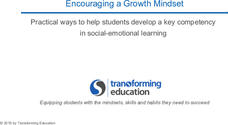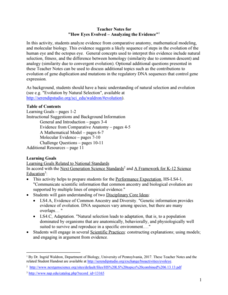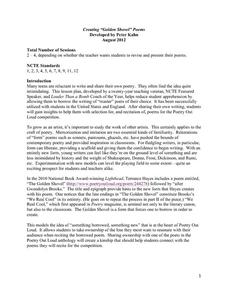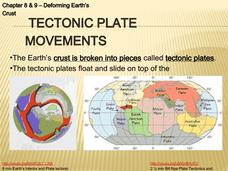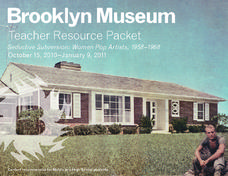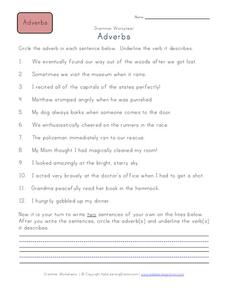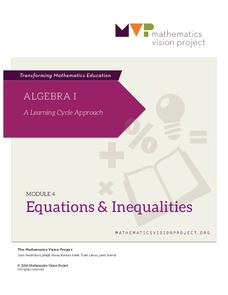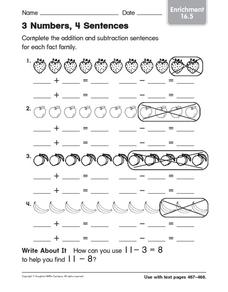Agency for Toxic Substances and Disease Registry
Don't Mess with Mercury (Lesson C)
The health effects of mercury exposure if the focus of the first of three activities about the properties of metals. Pairs research mercury to write, prepare, and share posters, articles, or PSAs with the class.
Virginia Department of Education
Inductive and Deductive Reasoning
Introduce pupils to the two types of reasoning, inductive and deductive. Classmates work in pairs or small groups to learn the difference between the two and apply these reasonings to develop valid conclusions.
Transforming Education
Growth Mindset Toolkit
A nine-slide presentation provides educators with practical ways they can help young people develop a growth mindset, a key competency in social-emotional learning.
Serendip
How Eyes Evolved – Analyzing the Evidence
Octopodes existed for hundreds of thousands of years before humans, yet our eyes share many similarities. Scholars analyze the evidence to determine if the evolution of eyes best fits a homology or analogy model. They discuss the issue...
Curated OER
My Credit Card Plan
Remember all those credit card tables lined up on your college campus? So alluring and dangerous, if you don't know what you're doing. Prepare your pre-college attendees for life by offering a lesson on credit management. They discuss...
Poetry Out Loud
Creating "Golden Shovel" Poems
Get even your most reluctant pupils reading, writing, reciting, and maybe even enjoying poetry! A four day lesson, young writers learn about Golden Shovel poems: a poem format that uses borrowed words from other poems as the last words...
Curated OER
Deforming Earth's Crust
A short and straightforward slideshow presentation is a great addition to your lesson on plate tectonics. With demonstrative diagrams and helpful facts, the presentation helps to reinforce a concept that can be a little tricky for...
EngageNY
Algebraic Expressions—The Distributive Property
Do your classes truly understand the distributive property? Use a demonstrative lesson to represent the distributive property in various ways. Learners solidify understanding by creating a geometric pattern for distributive...
Curated OER
Defining Love
After reading and discussing Love Medicine by Louise Erdrich, pupils compare/contrast the concept/theme of love within several multiple pieces of literature. They must support their claims with textual evidence. In addition, they analyze...
Brooklyn Museum
Seductive Subversion: Women Pop Artists, 1958–1968
What role did women play in pop art during the 1950s and 1960s? The class researches the role of women in mid-century America and how those roles were portrayed through the pop art of the time. They use an excellent set of...
Baylor College
Why Is Water Important? Pre-assessment
This water worksheet is just the tip of the iceberg! It a multiple-choice quiz meant to be a pre-assessment for a wonderful water unit. There are 10 questions to be answered regarding the role, properties, and behavior of water. Make...
Kids Learning Station
Adverbs
Modify different verbs with a worksheet about adverbs. Kids read 12 sentences and circle the adverbs in each, in addition to underlining the verb that they describe. Next, they write their own sentences and indicate the appropriate...
Mathematics Vision Project
Module 4: Equations and Inequalities
Can you justify that mathematically? Help learners see the process of solving as using mathematical properties rather than a set of steps to memorize in the fourth module of a nine-part Algebra I series. The module contains six...
Fuel the Brain
Addition
Having your youngsters learn more advanced addition will help them in solving these 2-digit and 3-digit addition problems. By calculating miles traveled and box tops collected, they will be eager to find the sums!
Curated OER
Bald Eagle Population Graphing
Students create graphs to illustrate the bald eagle population. They identify the population of bald eagles in Minnesota and the United States. They create three graphs to represent the population data including a line, bar, and...
Curated OER
Joining (Addition) Result Unknown
Pupils will put their addition skills to the test by solving these word problems. They are asked what the unknown solution is based on the given number "plus one more."
Curated OER
3 Numbers, 4 Sentences
In this addition and subtraction learning exercise, students complete the addition and subtraction sentences for each fact family. Students write their answers on the lines.
Fuel the Brain
Separate Result Unknown: Addition & Subtraction
Have you done enough chores to earn the right amount of money for the things you want to buy? Have your youngsters use addition and subtraction to determine if Brady and Abigail have enough money to buy their preferred items!
Curated OER
Joining (Addition) & Separating (Subtraction) - Result Unknown
How much is the total? How many more is left? These basic questions are asked of students through two story problems that involve catching fish on a weekend fishing trip and goal of reading a certain number of books. Your learners will...
Curated OER
A Method of Front-End Arithmetic
Teach the class how to add using front-end addition. They are given a shopping list and use it to practice adding from the largest place value to the smallest. Computational math and shopping, what fun!
Curated OER
Domino Adding
Students practice adding numbers to twelve. In this computation lesson, students construct paper domino patterns and play games in which they use the the dots on the dominoes to make addition problems.
Curated OER
I Am The Greatest
Students work with the place value of given digits. In this place value lesson, students use a deck of number cards to find the greatest number when they draw three cards from the deck. They arrange the the digit from greatest to least.
Curated OER
Finding Averages
In this averages and mean learning exercise, 4th graders find the average and/or mean of 5 groups of numbers and place their answers on the lines provided.
Curated OER
Math Readiness - Counting 1 to 5
In this counting worksheet, students count the number of objects in one column and match them to the correct number in the other column. Students match 10 objects to 10 numbers.


